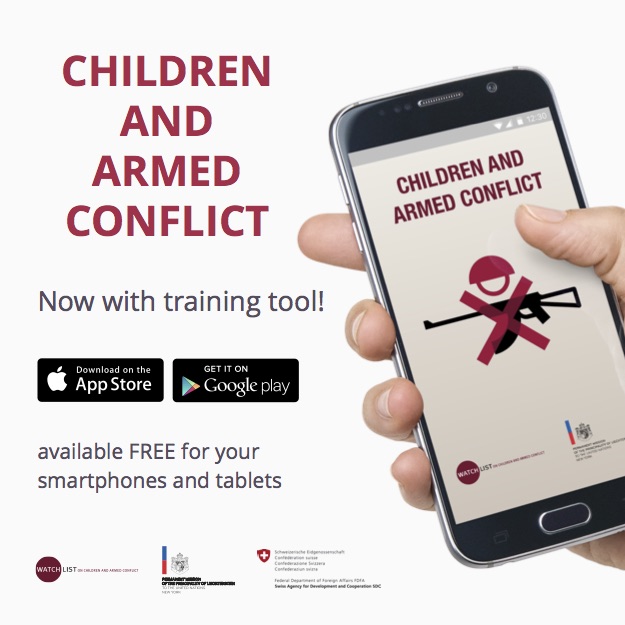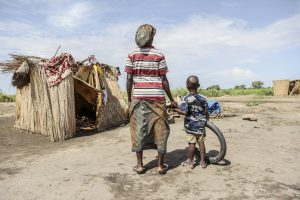Afghanistan
Advocacy
Hizb-i Islami of Gulbuddin, the Islamic State in Iraq and the Levant-Khorasan (ISIL-KP), and Taliban forces and affiliated groups, including the Haqqani network, are each listed in the annexes of the Secretary-General’s (SG) latest annual report (S/2024/384) on children and armed conflict (CAAC) for multiple grave violations against children. Explosive ordnance continues to be the most prominent cause of child casualties in Afghanistan. According to UNAMA’s report on the human rights situation in Afghanistan from October to December 2024, explosive remnants of war led to 47 child casualties (eight girls, 39 boys). Ongoing violence and the presence of explosive ordnance near schools continue to obstruct children’s access to education and basic services, limit their freedom of movement and jeopardize their safety. According to the UN, the exclusion of women and girls from most facets of life, including education and the workforce, “has significantly increased their protection risks and worsened an already deeply challenging humanitarian situation.” UNAMA’s mandate is up for renewal in March, per SCR 2727 (2024). The Security Council should:
- Demand that all parties in Afghanistan fully uphold their obligations under international law, including international humanitarian law (IHL) and human rights law (IHRL);
- Call on the de facto authorities to abide by Afghanistan’s national and international commitments to protect children, including the definition of a child as any individual under 18 years, the Convention on the Rights of the Child and its Optional Protocol on the involvement of children in armed conflict, the Paris Principles and Commitments, and the Safe Schools Declaration;
- Reiterate its call on the de facto authorities to swiftly reverse the policies and practices restricting the human rights and fundamental freedoms of Afghan women and girls, pursuant to SCR 2681 (2023);
- Reiterate its demand that all parties allow rapid, safe, and unhindered humanitarian access consistent with international law to humanitarian personnel, including women, to provide humanitarian assistance and protection services to civilians;
- Call on parties to ensure that civilians, including women and girls, are allowed unrestricted access to humanitarian assistance and basic services;
- Ensure the allocation of sufficient resources to strengthen capacities to the child protection mandate, including for monitoring and engaging with parties to end and prevent grave violations, and to address threats posed by explosive ordnance.
AT THE TIME OF WRITING, THE SECURITY COUNCIL PENHOLDERS FOR 2025 REMAIN PENDING.
This information is based on Watchlist’s Children and Armed Conflict Monthly Update – February 2025.
In November, the SG published his sixth report on the situation of CAAC in Afghanistan (S/2023/893), covering the period from January 2021 to December 2022. During this period, the CTFMR verified 4,519 grave violations against children. Following the takeover of Kabul by the Taliban in August 2021, the Afghan National Defense and Security Forces (ANDFS) ceased to exist as a party to conflict. The Taliban, acting as the de facto authorities since August 2021, “has not made any reference to previous domestic law such as the Child Rights Act and/or policy such as the National Child Protection Policy to help guide their efforts on child protection measures. Similarly, no action has been taken by the Taliban to ensure compliance with international standards pertaining to children, such as compliance with the definition of a child as per the CRC.” The Taliban was the most prevalent perpetrator of grave violations (1,886), followed by unidentified perpetrators (1,605). Killing and maiming was the most prominent grave violation verified (3,248), followed by the denial of humanitarian access (718) which sharply increased during the reporting period, particularly in 2022. Recruitment and use and attacks on schools and hospitals remained high, and both the military use of schools and hospitals and the detention of children dramatically increased as compared to the previous report. Policies regarding the denial of education to girls, restrictions on humanitarian activities, the definition of a “child” based on physical signs of puberty, the dissolving of Juvenile Justice courts, among others, all raise serious concerns for the protection of children, as well as the ability of survivors of grave violations to access support services. The Working Group should:
- Strongly condemn all continuing grave violations committed against children in Afghanistan, and demand that all parties fully uphold their obligations under international law, including IHL and IHRL;
- Call on the de facto authorities to abide by Afghanistan’s national and international commitments to protect children, including the definition of a child as any individual under 18 years, the Convention on the Rights of the Child and its Optional Protocol on the involvement of children in armed conflict, the Paris Principles and Commitments, and the Safe Schools Declaration;
- Call on the de facto authorities to swiftly reverse the policies and practices restricting the human rights and fundamental freedoms of Afghan women and girls, including related to their access to education, employment, freedom of movement, and women’s full, equal and meaningful participation in public life, pursuant to SCR 2681 (2023);
- Demand that all parties allow full, rapid, safe, and unhindered humanitarian access consistent with international law for all humanitarian personnel, including women, for UN agencies, international and national non-governmental organizations, and for other humanitarian actors, urge the Taliban to revoke the ban on women working for international and national non-governmental organizations and the UN and to allow women and girls safe access to humanitarian assistance and basic services;
- Call for allocation of sufficient resources to the UN Country Team to strengthen capacities to deliver on its child protection mandate, including for monitoring and engagement with parties to end and prevent grave violations, and to address threats posed by landmines, ERW, and IEDs.
This information is based on Watchlist’s Children and Armed Conflict Monthly Update – January 2024.
Publications
UN Action
Year listed: 2003
Action Plans signed: Afghan National Police (including the Afghan Local Police) – recruitment and use of children and sexual violence against children (January 2011)
Sanctions Committee: 1988 Sanctions Committee and 1267 ISIL and Al-Qaeda Sanctions Committee (Current Chair: Indonesia)
Secretary-General’s reports on CAAC in Afghanistan: 2021; 2019; 2015; 2011; 2008
Security Council Working Group conclusions on Afghanistan: 2020; 2016; 2011; 2009
UN Mission: UNAMA
Perpetrators listed in the annexes of the Secretary-General’s annual reports on children and armed conflict
| 2001 | 2002 | 2003 | 2005 | 2006 | 2007 | 2009 | 2010 | 2011 | 2012 | 2013 | 2014 | 2015 | 2016 | 2017 | |
|---|---|---|---|---|---|---|---|---|---|---|---|---|---|---|---|
| Afghan National Police (including Afghan Local Police)~* | a | a | a | a | a | a | a | a | |||||||
| Factions associated with the former Northern Alliance | a | ||||||||||||||
| Factions in the south of Afghanistan | a | ||||||||||||||
| Factional fighting groups | a | ||||||||||||||
| Haqqani network* | a | a,b | a,b | a,b | a,b | a,b | a,b | a,b | |||||||
| Hezb-e-Islami of Gulbuddin Hekmatyar* | a,b,c | a,b | a,b | a,b | a,b | a,b | a,b | ||||||||
| Hezb-i-Islami | a | ||||||||||||||
| Jama’at al-Da’wah ila al-Qur’an wal-Sunnah* | a | a | a,b,d | a,b,d | a,b,d | a,b,d | a,b,d,e | a,b,d,e | |||||||
| Taliban forces/remnants of the Taliban* | a | a, b, d | a,b,d,f | a | a,b | a,b,d | a,b,d | a,b,d | a,b,d | a,b,d,e | a,b,d,e | ||||
| Tora Bora Front* | a | a | a,b,d | a,b,d | a,b,d | a,b,d | a,b,d,e | a,b,d,e | |||||||
| Latif Mansur Network* | a | a,b,d | a,b,d | a,b,d | a,b,d | a,b,d,e | a,b,d,e | ||||||||
| ISIL – Khorasan Province | a,b |
a: Parties that recruit and use children
b: Parties that kill and maim children
c: Parties that commit rape and other forms of sexual violence against children
d: Parties that engage in attacks on schools and/or hospitals
e: Parties that engage in abduction of children
f: Parties that deny humanitarian access to children
~ This party has concluded an action plan with the United Nations in line with Security Council resolutions 1539 (2004) and 1612 (2005).
* This party has been in the annexes for at least five years and is therefore considered a persistent perpetrator.




